
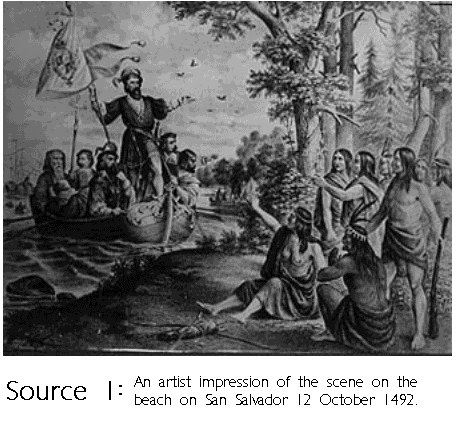
ALTHOUGH THE INTEREST OF EUROPE WAS IN THE EAST AT THE TIME, THE BACKGROUND OF COLUMBUS ENCOURAGED HIM TO PROMOTE AN UNUSUAL EXPEDITION IN WHICH HE DISCOVERED ISLANDS IN THE WEST AND RETURNED SUCCESSFULLY. EUROPEANS WERE MOSTLY IGNORANT OF THE WESTERN HEMISPHERE, BUT THEY WERE INCREASINGLY INTERESTED IN THE EAST, AND SOME WERE EXPLORING A SEA ROUT TO REACH IT.
The Interest of Europe
During the Middle Ages (500-1500A.D.) most Europeans were peasants who laboured on the lands of powerful nobles and kings; they had no education and seldom travelled beyond their village. Education was in the hands of the powerful Roman Catholic Church and was based on the Bible; the educated few knew of the Holy Land of Palestine and some daring Christians had made the pilgrimage to Jerusalem. It is unlikely that the news of the landing of Lief Ericson, a Viking, on Newfoundland in about 1000A.D. ever reached the rest of Europe. However, in 1096 Muslim Turks captured the Holy City, and for nearly 200 years European soldiers travelled east to drive the Turks out of the Holy Land in a series of wars known as the Crusades. They failed, but returned with exciting stories and extraordinary goods like silks, spices, perfumes, carpets and plates made in China, India and the Middle East. Soon a flourishing trade in luxury goods sprang up between the Muslims and the Italian merchants of Venice and Genoa. It was
difficult, dangerous and expensive, but very rewarding. Between 1271 and 1296, a Venetian merchant called Marco Polo travelled as far as China and returned with the news that luxury goods could be bought much more cheaply where they were made. The search began among nations of Europe for a shorter, safer, cheaper route to the East - by sea. In 1419, Prince Henry of Portugal opened a school in Lisbon from which explorers set out trying to reach India by sailing round Africa.
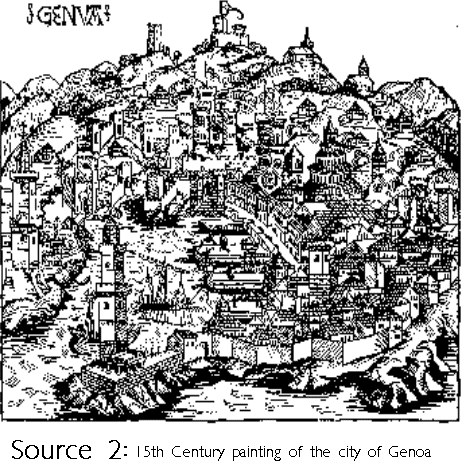
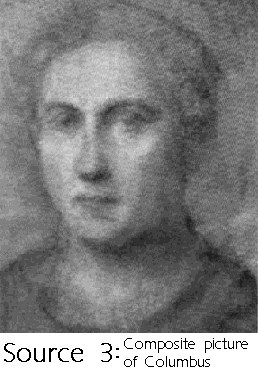
AT THIS TIME, COLUMBUS, WHO HAD BEEN BROUGHT UP IN ITALY, SETTLED IN PORTUGAL WHERE HE BECAME AN EXPERT MARINER.
Christopher Columbus was born the son of a weaver in about 1450 at Genoa, an important centre of the luxury goods trade. As a boy he would have seen valuable goods coming into Europe by ship from the East and having listened to exciting stories the sailors told. Aged 10 he was already going on fishing trips and by the time he was grown his fascination with sailing and the East was established. In 1476, when pirates attacked his ship, he was lucky to reach the shores of Portugal. After joining his brother Bartholomew's chart and globe making business in Lisbon, Columbus married the daughter of an explorer who had property in the Canary Islands.
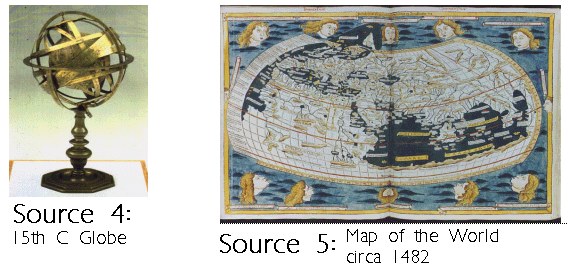
As a master seaman in the Portuguese merchant marine he travelled as far north as Iceland, all round the Mediterranean, and to the Canaries in the south. He sailed on the latest ships like the carrack and caravel, and with new navigational instruments like the quadrant and astrolabe, he learned to calculate his position at sea and the distances he travelled.
DEVELOPING A UNIQUE PROPOSAL FOR REACHING THE EAST, COLUMBUS WAS UNABLE TO OBTAIN FINANCIAL BACKING UNTIL SPAIN AGREED TO BACK HIS EXPEDITION TO THE WEST.
An Unusual Expedition
Meanwhile he studied globes and the latest map of the world by Toscanelli; he learned the position of Cipangu (Japan) from Marco Polo's book; from living in the Canaries he knew that the winds blew constantly westward. At least he calculated that by sailing west for about 3,500 miles he could reach Japan in about three weeks, and, being a committed Messianic Jew, he was convinced that God had chosen him to reach Asia first.
In about 1480, some time after his wife died, Columbus went with his plans to King John of Portugal. After many years he was rejected; the King's experts calculated the distance from Europe to Asia to be 10,000 miles.
Also, in 1487, Bartholomew Diaz had sailed round the southern tip of Africa - the way to India was clear!
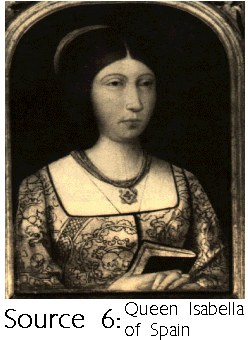
Columbus was rejected next by the rulers of Spain, who were fighting the Moors, and by the King of England. Finally, in 1492, Queen Isabella, having defeated the Moors, and after pawning some of her jewels, made an agreement with Columbus. He was to claim the lands of the east for Spain, bring back treasures, and arrange for the conversion to Christianity of the native. He would receive three ships with supplies for a year, and if successful, would be given 10% of the profits and the titles "Admiral of the Ocean Sea" and "Viceroy of the Indies".
AFTER A DRAMATIC VOYAGE ACROSS THE ATLANTIC COLUMBUS LANDED IN THE BAHAMAS AND ESTABLISHED RELATIONS WITH THE INHABITANTS.
Discovery of Islands in the west
Setting out from Palos, on the 3rd. August, the Nina, Pinta, and Santa Maria reached the Canaries in a week.
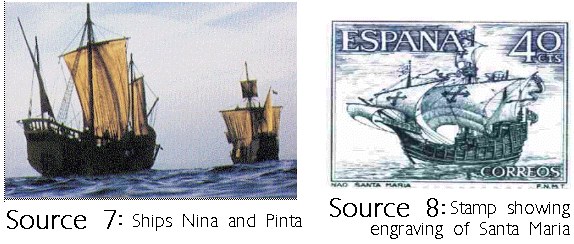
After repairing the rudder of the Pinta and pulling a lateen sail on the Nina, the fleet continued on the 6th September. After three weeks plain sailing, the crew became restless: the Saragasso Sea of weed was holding them back; the winds kept blowing them away from Spain; the compass would not point north.
On the 9th October, Columbus barely stopped a mutiny with threats, bribes of treasure, and a promise to turn back if they saw no land within 3 days.

On the third day, 12 October 1492, the fleet arrived at San Salvador, which the natives called Guanahani. Still searching for Japan, the fleet also stopped at what is thought to be Rum Cay, Long Island, Crooked Island and the Ragged Islands.

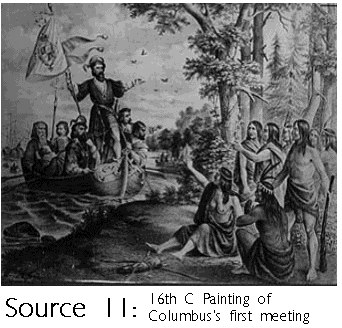
To overcome their fear of the strangers, Columbus laid out gifts of cloth caps, glass beads, and tambourine jingles and the natives quickly brought back in exchange parrots, balls of cotton and food. Later, Columbus persuaded six of them to guide him through the islands, although two of them escaped.
COLUMBUS WAS GUIDED THROUGH THE GREATER ANTILLES WHERE HE WAS FORCED TO MAKE A SETTLEMENT BEFORE RETURNING TO SPAIN WITH NEWS OF HIS SUCCESS.
He returned successfully
Encouraged by stories of a great city and king to the south, Columbus set off for Cuba on 27th October, but after some time he found only a settlement of fifty huts and no gold. On 5th December he reached Haiti and after meeting local chiefs was given a magnificent belt with a solid gold mask as a buckle. He noticed that the natives wore gold ornaments in their ears, noses and lips. On 25th December the Santa Maria struck a reef and was wrecked although her cargo was saved. Since the Pinta had deserted to look for gold, Columbus left behind 39 men with instructions to build a trading post, called Navidad, to search for gold. Reaching the Azores in the Nina by March 1493, Columbus wrote to the Queen saying that he had reached the east, claimed the lands for Spain, was bringing treasure, and natives for conversion. When he arrived in Barcelona King and Queen greeted him as a national hero of Spain.










